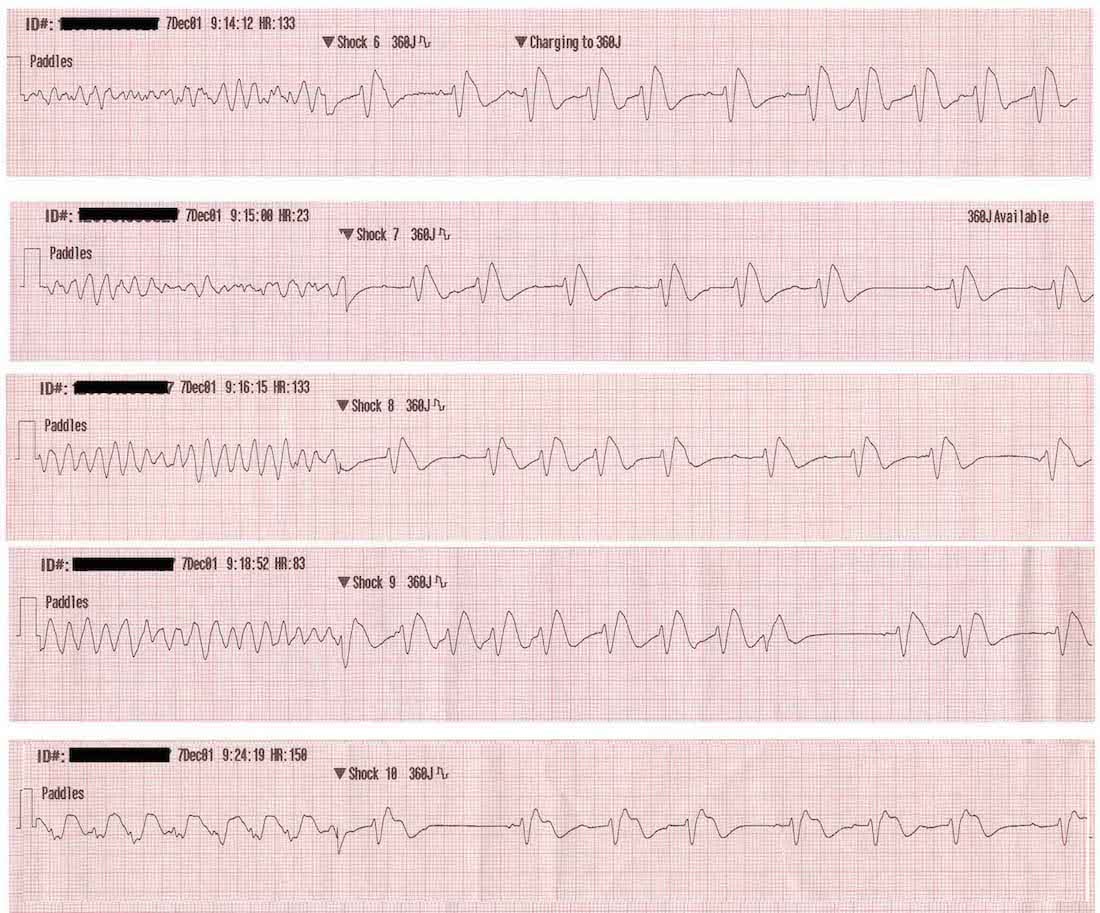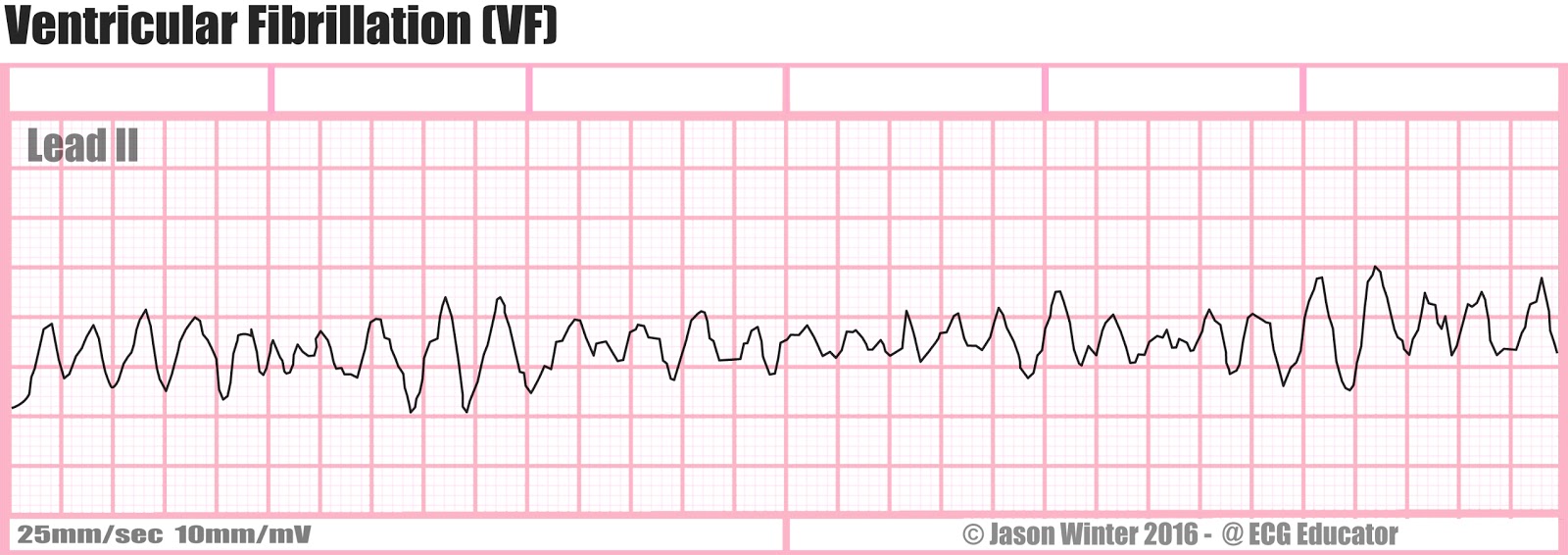Ventricular Fibrillation V Fib Ekg

Ventricular fibrillation vf is the the most important shockable cardiac arrest rhythm.
Ventricular fibrillation v fib ekg. Ventricular tachycardia vs ventricular fibrillation arrhythmia means irregular cardiac rhythm and slow arrhythmias are called bradyarrhythmias and fast ones are called tachyarrhythmias there are various types of arrhythmias. The ecg criteria to diagnose ventricular fibrillation vfib on a 12 lead ecg is discussed including a brief discussion of treatment using automated external defibrillators aed and icds. As a result the heart cannot pump blood. Ventricular fibrillation is initially found in about 10 of.
They are atrial tachycardia monofocal or multifocal atrial fibrillation atrial flutter atrioventricular nodal re entry tachycardia atrioventricular re entry. 5 in vf the etiology of arrest is often attributed to either acute ischemia or non ischemic arrhythmia. Ecg features of ventricular fibrillation. Symptoms of both afib and vfib are shortness of breath dizziness nausea and chest pain.
Ventricular fibrillation vf or v fib is the most common initial heart rhythm in patients with out of hospital cardiac arrest ohca and the most salvageable one. When it occurs the coordinated contraction of the ventricles is replaced rapid chaotic electrical signals. V fib ventricular fibrillation is an emergency that requires immediate medical attention. Ventricular fibrillation v fib ventricular fibrillation v fib or vf is a condition in which there is uncoordinated contraction of the cardiac muscle of the ventricles in the heart making them quiver rather than contract properly.
Atrial fibrillation afib and ventricular fibrillation vfib are both a type of abnormal heart rhythm arrhythmia. Atrial fibrillation is caused by irregular electrical impulses in the atria and ventricular fibrillation is caused by irregular electrical impulses in the ventricles. The ventricles suddenly attempt to contract at rates of up to 500 bpm. Ekg reference guide for ventricular fibrillation.
Ventricular fibrillation results in cardiac arrest with loss of consciousness and no pulse. 8 although vf appears as a chaotic and disorganized rhythm characteristics of the ventricular fibrillation waveform such as. It is due to disorganized electrical activity. Ventricular fibrillation is the most commonly identified arrhythmia in cardiac arrest patients.
Ventricular fibrillation v fib or vf is an abnormal heart rhythm in which the ventricles of the heart quiver instead of pumping normally. This is followed by death in the absence of treatment. This is pathognomonic unique to ventricular fibrillation and must not be confused with any other arrhythmia. The ecg shows irregular waves with varying morphology and amplitude.
Includes ekg practice tracings and assessment tips.
















